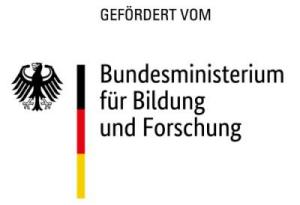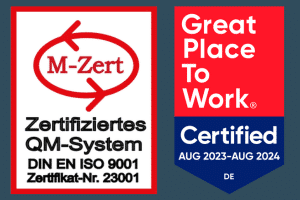Globalization and Internationalization Challenges: Transliteration
When dealing with globalization and internationalization, companies have to take into account a great deal of aspects, being legal and cultural issues among the most critical to face.
In this article, QUANTO Solutions highlights the aspects that could potentially be critical for your organization and in particular, which role transliteration plays in this context.
Globalization and Internationalization
Let us first explore the relevance of these two concepts for your organization, which opportunities they offer and which challenges you might have to face when dealing with the transformation of your business.
Globalization
Globalization can be defined as a generic term encompassing both internationalization and localization.
In the business world, globalization means for a company to be active in different markets, from production to distribution.
Just think about McDonald’s with its global franchising network in more than 100 countries, or Amazon, the world’s largest internet-based marketplace, or the omnipresent streaming service Netflix (in more than 190 countries) and Nike with its “Swoosh” Logo, to name a few.
The advantages of globalization are evident for both entrepreneurs and consumers: raw materials, manufacturing and services at the best conditions as well as consistent brand quality, services and standards, including safety.
At the same time, companies must face challenges like
- ageing population in many developed countries
- ongoing digitalization, automation, AI and Big Data
- economic and political developments such as trade tensions with China, or Brexit
To stay fit for the future, companies should identify these trends at an early stage and take appropriate actions.
QUANTO Solutions is your reliable partner for everything around digital transformation, customized SAP solutions and more. In our blog you will find the latest trends about Big Data as well as integrated, cutting-edge solutions to tackle your business challenges.
Internationalization
Simply put, internationalization is the expansion of a company into new global markets. Understanding of local values and behaviors as well as adaptation to local situations and requirements are also part of this process, to optimize products and services for the target region, its language and culture.
Internationalization also describes a corporate strategy that helps design and scale products and services to different market requirements.

IKEA is an excellent example of a successful internationalization, providing assembly instructions for furniture with fewer written text and many culture-neutral illustrations, thus generating as little additional effort or misunderstandings as possible in the internationalization process.
In the IT sector, you have to pay particular attention to the following aspects when it comes to internationalization:
- Encoding: ASCII character encoding is fine with texts in most languages with Latin alphabet. Other languages such as Cyrillic or Chinese usually require a wider set of character encodings, such as Unicode.
- Hardware: Software designers should keep in mind that not every hardware equipment may be available in all countries.
- Usability: Texts in English are usually quite short. But sentences and phrases in other languages like German or French are usually longer and require more space. When programming user interfaces, take this aspect into account. Furthermore, keep in mind that many languages read from left to right, but other scripts such as Arabic or Hebrew are right-to-left languages.
The greatest internationalization challenges include:
- Legal requirements in the target market
- Technical specifications
- Diversity in language and cultures
- Payment processing and logistics
- Local contacts and networks
- Workforce and their skills
For every internationalization requirement you may have, QUANTO Solutions provides you with advice, support and many years of experience in this field!
Localization
Following internationalization, products have to be tailored to the needs of a specific target market. This is what we call “localization” of a product or a service for another country or region.
McDonalds provides an interesting example of localization in India, where about 40% of the population are vegetarians. In India, McDonalds offers a vegetarian “McAloo Tikki” burger to meet regional preferences. In Israel, many McDonalds stores serve kosher dishes and are closed during Sabbath.
Translation plays a major role in this context and can be considered as a subset of localization. Localization is a more comprehensive process and addresses cultural and non-textual aspects as well as language-related issues, such as:
- Format of names (last name, first name), phone numbers, dates, times
- Writing direction (in Hebrew and Arabic from right to left)
- Units of measurement: Celsius vs. Fahrenheit or kilometers vs. miles
- Electrical voltage, frequencies, plugs
- Punctuation, symbols, pictograms (e.g. certain colors)
- Legal requirements (e.g. GDPR for EU citizens)
Things to avoid in the localization process:
- Ignoring local practices, cultural differences and language specifics
- No dedicated schedule and resource planning for localization and translation
- Completely disregarding localization in your rollout plan.

Quanto Solutions can assist you with top-notch expertise in the field of globalization, internationalization and more specifically, transliteration. Let’s have a closer look at transliteration and its definition and significance.
What are Transliteration, Transcription and Romanization all about?
There are more than 7,000 languages worldwide. What do you think are the most widely- spoken languages?
Perhaps it comes as no surprise that Mandarin Chinese tops the list of the most spoken languages (more than 1.2 billion native speakers), followed by Spanish (400 million native speakers) and English (350 million native speakers).
In order to represent content, words and texts in languages with different alphabets, experts use transliteration, transcription and romanization. To a certain extent, these terms can be used as synonyms, but there are slight differences we want to highlight and explain how they are relevant for the globalization and internationalization of businesses.
Transliteration
Transliteration means transferring words from the alphabet of a source language to the alphabet of the target language.
Transliteration also helps the reader pronounce a particular word in the target language. This is achieved by changing the alphabet of the original text into similar-sounding and corresponding characters of another alphabet in a foreign language.
Diacritical marks are often used for this purpose as additional information to reflect the exact pronunciation. As a rule, there is only one official transliteration in Chinese. This is pinyin, i.e. the transcription of Chinese characters into sounds, which also indicates the tones or pronunciation together with the diacritical marks.
This allows words to be entered on different laptop keyboards and word processors, especially in languages that do not use the Latin alphabet, such as Chinese, Russian, or Arabic.
In addition, transliteration is helpful when a person does not know the alphabet of a language, but understands and can speak the language.
Transcription
Transcription describes a phonetically accurate conversion using a defined phonetic spelling set. Even without knowing a specific language, transcription helps you pronounce a word or text written in that language. The following example may help you better understand the difference between transliteration and transcription:
| Greek | Transliteration | Transcription |
| Μπερλίν, Ντακάρ, Γκέντ | Mperlín, Ntakár, Gként | Berlin, Dakar, Gent |
For each language you may have multiple transcription variants worldwide, according to the specific use cases. For example, in Russian there is an official transcription variant for passport names, another variant for street names, as well as a variant for scientific transcriptions according to ISO standards.
However, there are also countries with no official transcription and transliteration, for example Thai. The problem here is that different people can inconsistently use different spellings and pronunciations, which can be a challenge, especially when issuing official documents.
Finally, let’s take a brief look at the definition of romanization.
Romanization
Romanization is a transcription/transliteration into Latin letters. The Latin script is the basis for the largest number of alphabets and languages, including English.
And what does all this have to do with globalization and internationalization?
Relevance of transliteration for international companies and organizations
Transliteration and transcription cover different use cases like:
- searching financial scores for businesses
- sanction lists
- issue of official documents
- address databases for marketing purposes
- master data management for global organizations
Transliteration helps optimize the representation of the following data :
- Names, surnames
- Company names
- Addresses
But in case of:
- Titels, positions in the company, departments
- Legal entity types
translation may be required.
The German engineering company Jungheinrich is a good example of how transliteration helps building a strong brand positioning. In Chinese, Jungheinrich becomes “永恒力.” The result of transliteration is “Yonghengli,” which means “eternal, constant force” and perfectly reflects Jungheinrich’s products such as their forklifts.
Follow this link to read more interesting examples of transliteration of international brand names in Chinese.
Remarkably, the reader will not realize whether transliteration or translation applies, and in case of transliteration, which specific characters have been used.
So when using software for transliteration, it is important to have a well-structured database for company names and addresses, to identify what types of information needs translation and what instead should be transliterated.
Let’s take a closer look at the technical aspects behind transliteration and translation.
Main challenges and technical aspects
Although machine translation is still not on par with human translation, and the results that you get are still unpredictable and always require human post-editing, some online translation services like Google Translate or Deepl are now producing texts that read very fluently, especially when it comes to widely spoken languages like English or Spanish. However, this is not the case with transliteration, transcription and romanization, where high-end, free-of-charge online services are hard to find.
Many transliterations are based on the Unicode’s ICU project, which represents a good starting point, but requires high manual adjustment.
A use case for proper names
An employee receives an e-mail in Japanese and uses Google Translate to understand its content. The employee learns that it is about a potential partnership and wants to reply.
However, the translation tool does not recognize proper names and translates the name of the potential business partner “Mr. 山下” as “Mr. under the mountain”. Mr. Yamashita – this is the right name of this person in Japanese – would certainly be annoyed at being addressed as “Mr. under the mountain” and would possibly question the business relationship.
Indeed, the Latin script has only 26 characters, which limits the representation of foreign texts, while Chinese, for example, has no alphabet, but more than 100,000 characters representing individual syllables. For daily use, a knowledge of 3,000 – 5,000 characters is usually required.
Moreover, other languages sometimes have sounds that the Latin alphabet cannot fully replicate. Although there are various ISO and DIN standards for transliterations into Latin (e.g. Chinese ISO 7098), this can lead, among other things, to transliterations not being consistent.
A use case for company names
To render the following Japanese company names, a combination of translation and transliteration is needed.
The transliterated parts of the names are green and the translated parts are blue-colored.
- 竹下建設 → Takeshita Construction
- 森製作所 → Mori Manufacturing
- ジャカコン物流 → Jakakon Logistics
As you can see here, the technical solutions for transliteration can be quite tricky and complex. We at Quanto Solutions will be happy to assist you and deliver tailor-made transliteration solution for your business!
To summarize: Transliteration in the context of globalization and internationalization
Our globalized world provides a wealth of advantages, but it also comes with some challenges, especially during this pandemic crisis. Globalization and internationalization offer companies the opportunity to find a much larger market for their products and services as well as to optimize their production processes.
Our services and solutions for the globalization and internationalization of your company: Digitization including transliteration and language services, as well as customized SAP solutions and Big Data integration.
Find out how we can help you and get one initial consultation free-of-charge!










